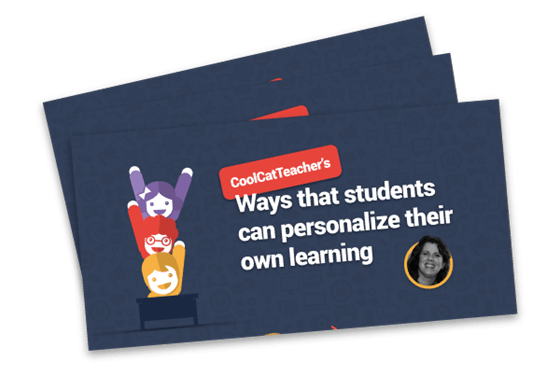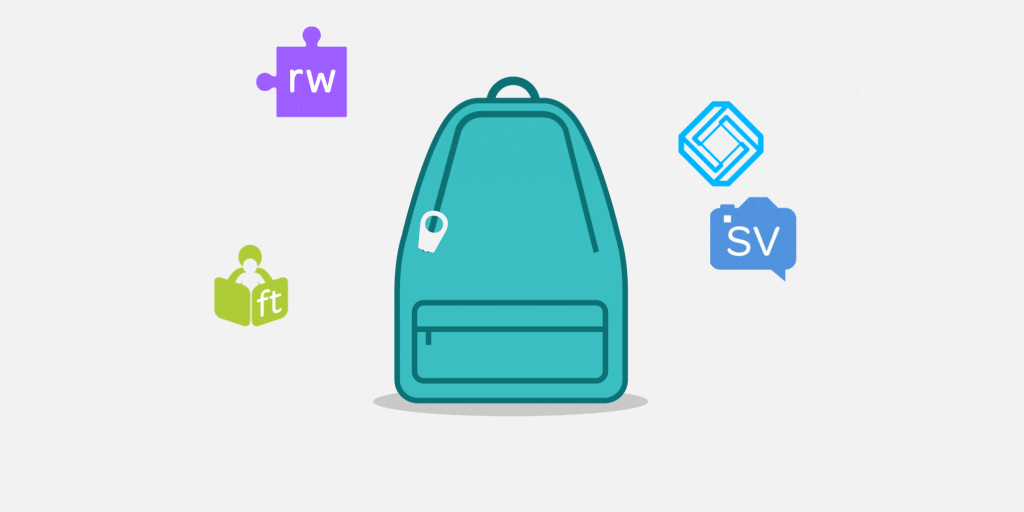Top 6 Takeaways from EdWeek’s Pathways to Personalized Learning Summit
This week we have another guest blog post from Andrea Ferrero the co-founder of Pockets Change.
Personalized learning starts when we focus on making learning personal. It’s about igniting student’s passion for learning and empowering students with tools and strategies to reach their individual goals.
As a newer model of learning, there are still a lot of questions surrounding implementation. The virtual Pathways to Personalized Learning Summit, hosted by EdWeek and sponsored by Texthelp, brought educators, administrators, and edtech teams together to look at these big questions and chart pathways forward.

Tech as a Tool to Build Learning Relationships
One of the most common concerns is that personalized learning is synonymous with one-to-one technology implementation. Principals and teachers in the midst of rolling out thoughtfully designed personalized learning initiatives across the country share that this is not the case.
While technology plays an important role in supporting individualized learning plans it is by no means a replacement for educators’ expertise. Instead, technology supports educators in grouping students, honing in on individual learner needs and interests, and empowering students to drive their own learning. The growing array of tech tools also offer opportunities for students to enhance learning relationships by collaborating in new ways and connecting deeply with content at their own pace.
One Size Fits None: Personalized Learning in Action
Personalized learning models are diverse. In order to best meet each classroom’s and school’s needs, the models themselves must be personalized. Stepping into schools you’ll find variety in the curricular materials being used, how classrooms are organized, the role of the teacher, how data are used to group students, and how a concept like "mastery" is defined. While no two programs are identical they share common values and a central focus on better meeting student needs.
Is This Just Good Teaching: How Personalized Learning Fits with UDL, PBL, and More
Great teaching that captivates and encourages learners by considering their holistic needs is not a new concept. For many teachers the core elements of personalized learning will bring to mind modifying content and context through Universal Design for Learning, encouraging student agency and collaboration through project-based learning, meaningfully integrating tech with blended learning and tapping into individual learner interests and goals with differentiated instruction. What lies in those connections is the tremendous potential and power of personalized learning. It incorporates effective practices from evidence-based learning models with new strategies for our evolving schools.
Choice, Voice, and the Quest to Empower Learners One Step at a Time
With all the excitement around personalized learning, it’s easy to get overwhelmed. But if you follow the advice of Vicki Davis (@coolcatteacher), a moderator of Texthelp’s “booth” discussion, you can create powerful transformations with two simple strategies. The first is to “innovate like a turtle”. Consider one goal or challenge you have for making learning more personal in your classroom and work to solve that before moving to the next one. This slow and steady approach to innovation provides time to reflect on what strategies and tools work best for you and your students.
The second strategy is to let students personalize learning for themselves. By giving students choice and voice in their learning, the role of personalization falls less on the teacher. Instead, it becomes the responsibility of the student to advocate for themselves and accommodate themselves.
Click the image below to get more recommendations from Vicki.
But Wait, Is it Working: Looking at the Data
We’re all still learning about how to best implement personalized learning strategies. Data showing efficacy and impact is being actively studied. Research organization, RAND has teamed up with schools to see the short- and long-term impacts of personalized learning initiatives. So far benefits have been equated with gains in math and reading scores, but the data is not sufficient to draw claims about the overall effectiveness of personalized learning initiatives.
Researchers and teachers alike point out that in order to see the larger behavioral, academic, and social benefits we will need to include student mindsets, student self-efficacy, social-emotional learning and other 21st century skills in our assessment of personalized learning outcomes.
The limitations of existing data pose an opportunity for increased innovation and examination of the variety of personalized learning models. This flexibility gives us each the chance to thoughtfully make the personalized learning movement our own.
Pathways Forward: Getting Started and Maintaining Movement
Whether you’re just getting started or you’re a few years into implementation, it’s important to take time to consider how you’re making learning personal. As you reflect on your own goals for innovation consider these close-out thoughts from summit facilitator, Stacey Stewart, the principal at @BelmontCragin.
- Be patient with the process. Rome wasn't built in a day and neither is whole school innovation.
- Be willing to be a learner. The greatest insights came from testing our innovation in practice and getting feedback from the results.
- Celebrate the small successes and share those successes with your school community frequently.
How are you making learning personal? Looking for more support in putting Personalized Learning into action? Check out the Texthelp Toolkit.

